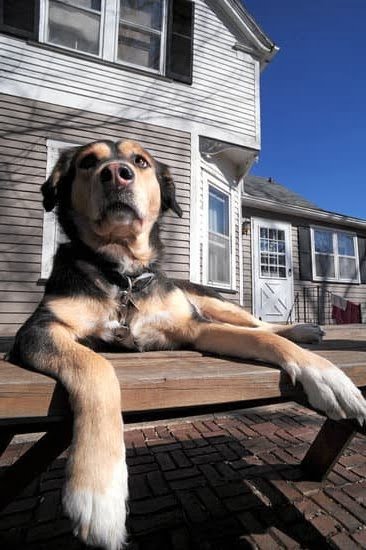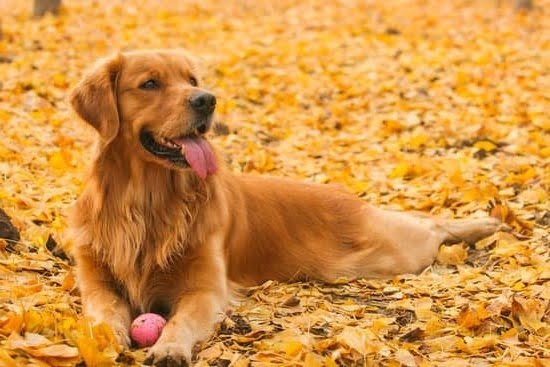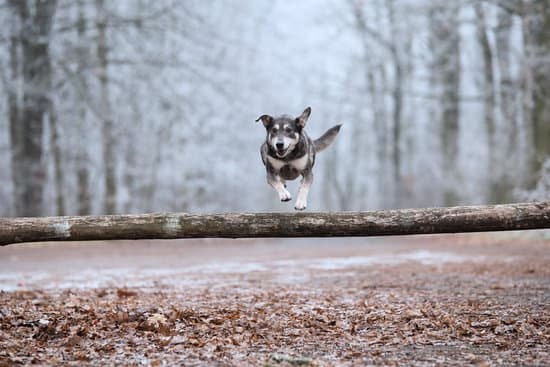Introduction
Training your hunting dog is an incredible undertaking that requires dedication and patience, but the rewards you reap are immense. A well trained hunting dog can increase success in the field, provide a greater awareness of surroundings, and help create a deep bond between you and your canine companion that lasts for years to come. Training your hunting dog is not just about teaching commands such as sit, stay, fetch or heel – it’s about instilling discipline and understanding between you both. Through training, your dog will be able to understand what behavior is expected of them so they can have the most successful hunt possible. Here are some tips on how to get started with training:
1. Start with Basic Obedience Training: Before heading out into the field for specialized hunting training, it’s important to first give your pup a base knowledge of general obedience commands such as “sit” and “stay”. Establishing these rudimentary commands allows you to impose structure into their lives when they later need it during actual hunts.
2. Teach them How to Follow Commands: When hunting together, safety should always remain paramount. Dogs need to learn how to follow basic commands while in the field such as “heel” or “fetch” in order to remain safe at all times. This allows you more control over their movements while in terrain filled with potential hazards such as other animals or natural elements like water.
3. Incorporate Games and Rewards into Their Training: One of the best ways to get positive results from your pup’s training is by incorporating rewards-based games into their sessions regularly so they have something fun and exciting to look forward to when learning new things. Not only does this help keep them keenly interested in what you are trying teach them but also encourages good behavior even after the training session is complete because they know great rewards await if obey properly!
4. Enjoy Some Quality Bonding Time: Last but not least – don’t forget that one of the biggest benefits of having a hunting dog goes far beyond what can be taught through drills and drills alone – forming lasting bonds through quality time spent together! Whether practicing specific skills or just hitting the trails together on an outdoor adventure, make sure to set aside plenty of shared moments with your furry best friend so they really feel part of your team!
Preparation
Before training begins, it is important to have the appropriate materials and equipment. Depending on the breed of dog, hunting equipment such as a lead, collar, tracking line, dummy launcher, whistle and retrieving harness will likely be necessary. For basic obedience commands, treats or rewards that your dog enjoys are essential; in addition a long leash (up to 15 feet), two buckets (one for storage and one to place treats in) and teaching mats or a designated area may also be helpful. Other things you may want include markers (like flags) to help you keep track of where you set up the dummies or marks during drills and lessons. You may also find it helpful to have a hunting partner who has experience with dogs to act as an assistant or mentor during your training sessions.
Building a Bond
When it comes to successful hunting with a dog, an important key is building a strong bond between the human and their four-legged friend. When both parties trust and understand each other, it creates the perfect environment for training and increases their success in the field. It’s essential that owners spend time bonding with their pup by providing physical interaction and positive reinforcement. Physical contact such as playing tug-of-war or even simply petting your pup lets them know you care about them and encourages good behavior. Positive reinforcement helps to reinforce good behavior; this can be done in the form of toys, treats, verbal praise or even hugs and belly rubs (canine version of a handshake!).
Getting to know a dog’s individual traits is just as important when establishing a relationship. Each pup has unique abilities which may not be suitable for particular tasks but give them an edge for others; for example some breeds are specialist swimmers whereas others may have heightened sense of smell or better recall memory than other canines. Taking these qualities into consideration whilst training will provide customised learning catered specifically towards your hunting partner ensuring total understanding between master and man’s best friend.
Establishing Rules & Boundaries
It is essential that your hunting dog knows the rules and boundaries before they are able to interact in hunting situations. This means that you need to establish these boundaries and expectations clearly with your pet. This can be done by setting clear expectations, providing verbal commands and hand signals, and always providing positive reinforcement when your dog behaves appropriately. These rules should be simple and consistent so that your dog will grasp them quickly and respond accordingly. Make sure that treats or praise are given right away when the desired behavior is displayed to reinforce it. This will help create a stable bond between you and your hunting companion, while also teaching it what kinds of behaviors are acceptable or not acceptable in the field. Additionally, any missteps or disobediences must be addressed quickly so as not to confuse the animal; ensure that he/she understands why their behavior was wrong and how it needs to improve for better results next time.
Teaching Obedience
Training a hunting dog doesn’t just stop at obedience. It can take years to properly train a hunting dog to be an effective companion when out in the field. To ensure their success, utilizing both positive and negative reinforcement training is key. Positive reinforcement involves providing your dog with rewards and praise when they exhibit desired behaviors during training, such as sitting or coming when called. On the other hand, negative reinforcement includes using reprimands or corrections when your dog behaves in inappropriate ways such as barking or jumping up on people. This can also include withholding rewards from them until they show improved behavior. It is important to note that neither of these methods should be taken too far as it may lead to an unmotivated or overly aggressive hunting dog down the line. In order for positive and negative reinforcement to work together effectively, consistency is essential – make sure you use positive reinforcement for desired behaviors and negative reinforcement for behaviors you don’t want to see again so that your dog knows what behaviors are expected of them! It will also help build trust between you and your hunting buddy over time.
Teaching Hunting Skills
Retrieving: This is one of the most important skills to teach a hunting dog. Retrieving requires teaching your pup to bring back fowl or game that has been shot and killed. Place the bird in an area where it can be easily retrieved so that your pup can practice without distractions or obstacles. You should be sure to break down the process into smaller steps and reward him for his successes with verbal encouragement or treats. You should also make sure he understands the command you are using by saying it clearly each time during the exercise.
Tracking: Teaching your pup to track animals successfully is an essential part of hunting. Start inside, away from distractions, then gradually move outside as he becomes more comfortable with the task. Introduce scents and movements by presenting them in a sequence one at a time, follow each scent trail with a reward when he finds something at the end. Track different terrains; woods, fields, underbrush, etc., and use different kinds of game so he gets used to different types throughout his training process.
Pointing: This skill requires teaching your pup to signal when they have detected nearby game. Teach him how to use his muzzle and body language while locked in position until released. Practice pointing indoors first then Slowly move outdoors as he becomes familiar with his technique on various terrain and animal types, such as ducks and rabbits. Make use of positive reinforcement tools like verbal praise and treats when they achieve success
Flushing: Flushing requires teaching your pup how to guide you to where animals have hidden themselves away in thick vegetation or corners amongst buildings where visibility may be reduced . Start off by setting up clear and easy scenarios for him so that he’s able to see where flushing might take place before moving onto harder scenarios that involve tougher ground conditions like thicker vegetation or sleeker obstructions within buildings You should arm yourself with Clicker + Treats for reinforcements when necessary during lessons. This skill set does require patience but remember you’re teaching this skill early on, Which will pay dividends in future hunting season!
Essential Commands
When training your hunting dog, you need to prepare for success. One of the most effective and popular tools for rewarding desired behaviors is called “clicker” training. This method works by associating the distinctive sound of the clicker with a reward that the dog will desire, such as a favored treat or toy. Every time the animal responds correctly to a command, they are immediately rewarded with the sound of the click and then with their desired prize.
Before getting started with this type of training, it is important to understand how clickers work. Once the animal learns that clicking means positive reinforcement and rewards, it will become easier for them to pick up essential commands like “come” or “sit” quicker. You’ll want to begin by practicing basic commands in an enclosed space with few distractions. As your pup progresses, increase their exposure to new areas and more challenging commands in order to keep them engaged and progress quickly.
Be sure to remain consistent in their training through repetition and rewards – without fail! This consistent reinforcement teaches your hunting dog which behaviors result in rewards, thereby strengthening those behaviors that can help during an actual hunt when split-second decisions are necessary for both human and canine hunter’s success.
Aside from regular reinforcement practice sessions, you can integrate clicker training into short playtime activities like sports such as hide-and seek or tail chasing games within your home or yard. Make sure all participants including fellow humans stay focused on keeping every reward simple yet valuable – like verbal praises along with food treats or toys – depending on which brings out the best response from your pup! Finally, remember that although a successful hunting session requires frequent practice and attention throughout an animal’s lifetime, teaching new commands through clicker training helps reach these goals sooner while simultaneously building trust between you both!
Improving Endurance
Developing an effective exercise plan for your hunting dog is key in ensuring that your dog is able to effectively and efficiently perform in the field. Exercise helps build physical endurance which will result in better results when hunting. In order to achieve this, you need to create a program that works for both you and your dog – one that can easily fit into your daily routine. Start with short jogs or walks, gradually increasing the length and intensity as your dog adapts. Try swimming as well as it works different muscles from running and walking but make sure you account for any differences in your climate. If too hot, be sure to keep an eye out for signs of over-exertion such as heavy panting, lethargy or collapse.
In addition to endurance building exercises like running, walking, and swimming, you should also consider incorporating fun activities into the mix. Activities such as playing fetch or Frisbee are great physical activities while still being engaging and rewarding for your dog. This not only makes exercising enjoyable but also helps reduce boredom related behaviours (barking etc.) The reward system can work wonders here; treats provide positive reinforcement during activities that may help maintain focus and build trust between owner and pet. Training courses are also wonderful options – the extra discipline could be very beneficial in achieving desired results when hunting!
Conclusion
Training your hunting dog is one of the best investments of time and energy that you can make in order to ensure successful, safe hunting trips. Training your dog allows them to understand commands and instructions that you provide, creates a stronger bond between you and your dog, instills discipline for responding properly to commands, improves safety by helping prevent accidental shootings, minimizes risks associated with predators, and enhances the overall experience of hunting together. With some patience and consistency in training routines, any hunter can teach their dog the essential skills needed for a successful hunting experience.

Welcome to the blog! I am a professional dog trainer and have been working with dogs for many years. In this blog, I will be discussing various topics related to dog training, including tips, tricks, and advice. I hope you find this information helpful and informative. Thanks for reading!





